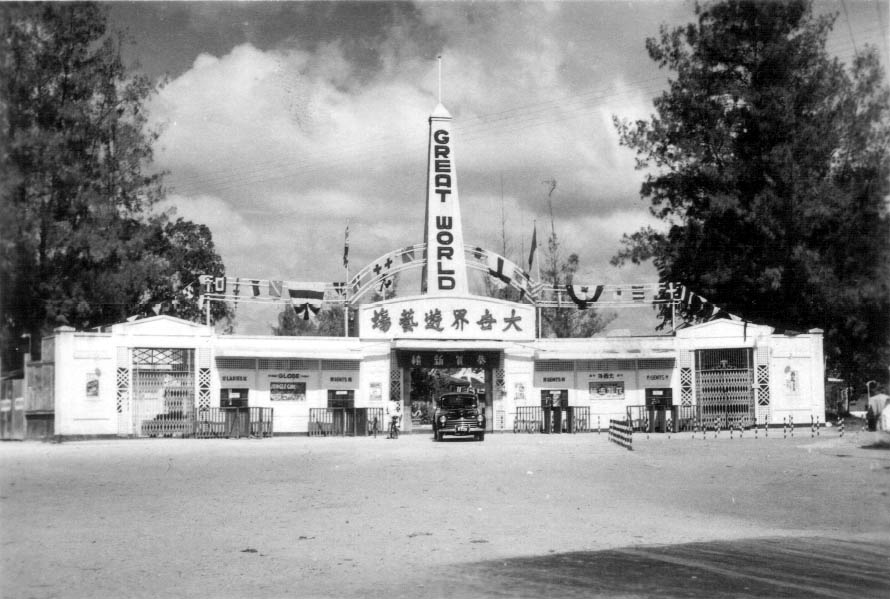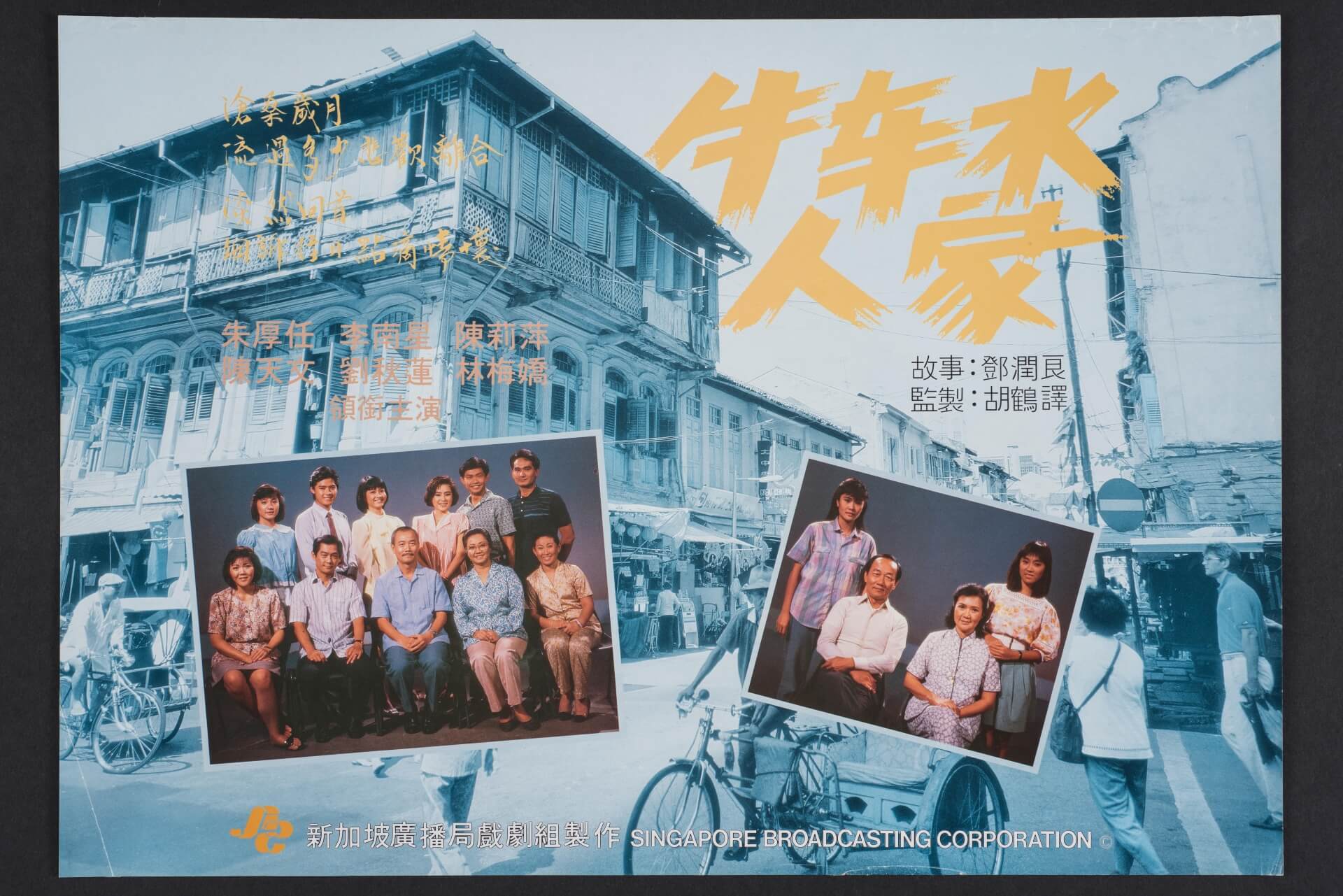A brief history of Chinese records in Singapore
In the early days, live performances were the main form of entertainment for the Chinese community in Singapore, though they were subject to the constraints of time and space. After American scientist Thomas Alva Edison (1847–1931) invented the cylinder phonograph in 1887, many others continued to study and develop it, before German-American inventor Emile Berliner (1851–1929) eventually improved it into the modern gramophone that we know today. This development completely revolutionised the transmission of sound in human history. Combined with modern recording technology, songs and music that were once transient in nature could now be preserved and even mass-produced for sale.
The arrival of gramophones and music records in the early 1900s brought the Chinese community in Singapore unprecedented auditory experiences and a brand-new mode of entertainment. Over the next few decades, records became popular music products and found their way into the homes of ordinary people. As such, tracing the history of gramophones and records in Singapore is one way of looking into the cultural life of the local Chinese community in the last century.
The beginnings of Chinese dialect records
Music records made in different languages were available in Singapore since the early 20th century. Given the diverse composition of the local Chinese community – which included many different dialect groups such as Hokkien, Teochew, Cantonese, Hainanese, and Hakka – it made sense for record companies to produce a variety of traditional music or popular songs in various dialects to cater to as many communities as possible to maximise sales. Mandarin records, specifically, came into dominance only after Singapore’s independence, as Mandarin gradually became the standardised language of the Chinese community. At the same time, records made in other Chinese dialects dwindled.
In the first half of the 20th century, gramophones and records distributed in Singapore were mainly from international record companies in America and Europe, such as the Gramophone Company from the United Kingdom and Beka Records from Germany. By the 1920s and 1930s, two Chinese-owned companies – Hong Kong’s New Moon Gramophone Company and Shanghai’s Great China Records – also started distributing their records to Singapore. Even though Singapore had no record companies of its own in this period, many local professional opera troupes and amateur groups were already making records by invitation from these foreign companies.1

Chinese records during and after the war
The outbreak of World War II sparked the ethnic consciousness of Chinese communities around the world. In response, Singapore also began selling Chinese records with anti-war sentiments. During the Japanese Occupation, imports of records into Singapore were halted. While entertainment was not at the top of people’s minds, the Japanese army decided to fill the gap in the market anyway by using unreleased recordings previously made in Shanghai to produce and sell records under the Sun label.2
The post-war 1950s was when Singapore’s homegrown record industry began to sprout. Record companies of all sizes, such as Ngee Fat Gramophone House, sprung up across the island. Many local singers, professional and amateur ones alike, also involved themselves in the business of producing records. The local record industry gradually transitioned from relying on imported records and acting as agents to becoming independent players. It was now capable of recording, producing, and packaging its own products.3


The 1950s and 1960s were an important, thriving period in the development of Chinese popular culture in Singapore. As a major form of media, music records interacted with other cultural forms such as Chinese opera, movies, and getai performances. For example, the market for Chinese opera film soundtracks saw a boom when a “Chinese opera film wave” was sparked by a series of Chinese opera movies imported from Hong Kong, including Butterfly Lovers (1954) and Sixth Madam Su (1960). At the same time, many artists and performance groups who were making records — including Seong Koon Low Won (1922–2002), Eng Yean Opera Troupe,4 and Wang Sha and Ye Feng5— frequently gave live performances in venues like amusement parks, cabarets, and theatres too.
In 1963, Television Singapura, Singapore’s first television station, was officially launched. The advent of the television era did not merely change Singapore’s entertainment ecosystem – it also opened a new chapter in the development of the local record industry. Televised Chinese opera performances and singing competitions organised by the television station often boosted sales of related records and promoted growth in the industry.

Cantonese vinyl record Yueyu xiaoqu (Cantonese folk tunes) produced by Horse Brand Records, 1965. National Museum of Singapore Collection, courtesy of National Heritage Board.
The development of the record industry and recording technology since the early 20th century has had a significant impact on the transmission of sound and the entertainment landscape. However, the local recording industry gradually lost its steam by the 1970s as music preferences shifted, pirated records proliferated, and new entertainment venues emerged, all affecting the record market and entertainment ecosystem in profound ways. Many recording artists responded to the changing times by transitioning to other fields, such as television and getai, to sustain their career in entertainment and continue contributing to the development of pop culture in Singapore.
This is an edited and translated version of 新加坡华人唱片简史. Click here to read original piece.
| 1 | Goh Song Wei, “The Gramophone Industry and Chinese Records in Pre-war Singapore: Global Network and Local Consumption”. |
| 2 | Ross Laird, From Keroncong to Xinyao: The Record Industry in Singapore, 1903–1985. |
| 3 | Goh Song Wei, “Wuliushi niandai xinjiapo huayu changpian: huayu yuxi shijiao xia de yanjiu” [Singapore Chinese-language records in 1950s and 1960s: From a Sinophone perspective]. |
| 4 | Eng Yean Opera Troupe was a modern Hokkien opera troupe led by sisters Lim Ing-ing and Lim Ian-ian. |
| 5 | Wang Sha and Ye Feng were the stage names of Heng Kim Ching (1925–1998) and Seow Tian Chye (1932–1995) respectively. The two were an iconic comedic duo in early Singapore. |
Gaisberg, Fred. Music on record. London: Robert Hale, 1943. | |
Goh, Song Wei. “The Gramophone Industry and Chinese Records in Pre-war Singapore: Global Network and Local Consumption”. Translocal Chinese: East Asian Perspective 16 (2022): 181–206. | |
Goh, Song Wei. “Wuliushi niandai xinjiapo huayu changpian: huayu yuxi shijiao xia de yanjiu” [Singapore Chinese-language records in 1950s and 1960s: From a Sinophone perspective]. In Malaysia in transformation and the Southeast Asian Chinese community: Selected papers on the Fifth Biennial International Conference on Malaysian Chinese Studies, edited by Khoo Kiak Uei, 527–546. Kuala Lumpur: Centre for Malaysian Chinese Studies, 2022. | |
Gronow, Pekka. “The Record Industry Comes to the Orient”, Ethnomusicology 25:2 (1981): 251–284. | |
Laird, Ross. From Keroncong to Xinyao: The Record Industry in Singapore, 1903–1985. Singapore: National Archives of Singapore, 2023. | |
Yung, Sai-Shing. “Qingmo chaoqu changpian suotan” [Musings on Teochew music records in late-Qing]. In Imprints in time: The history of Teochew opera in Singapore, edited by Su Zhangkai, 250–252. Singapore: Nam Hwa Opera, 2018. |










